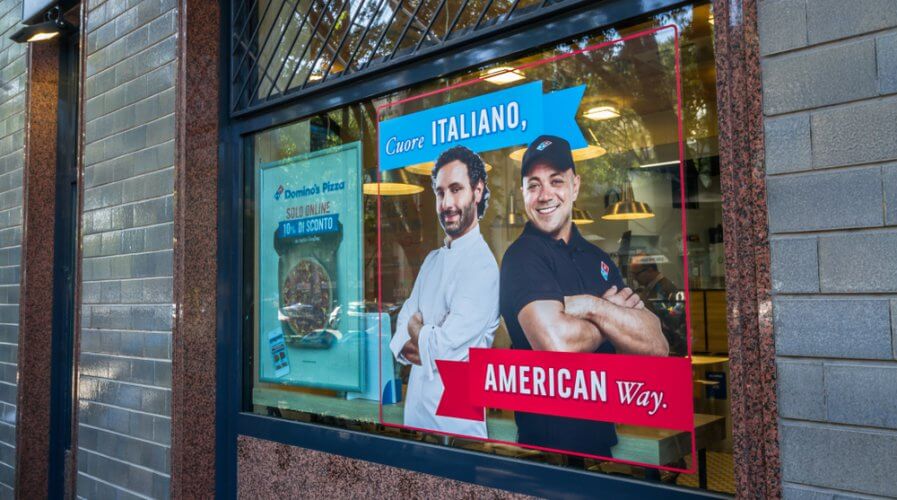
Dominos is an interesting example of chatbots (and marketing) done right. Source: Shutterstock
Can chatbots do more harm than good to your business?
BUSINESSES seem to have fallen in love with chatbots over the past 12 to 18 months. Service providers, manufacturers, restaurants, and even banks have moved into the chatbot arena now.
Given how intelligent chatbots can be, their popularity is only soaring — and why not? The technology is relatively easy to deploy, affordable, and can lighten the workload for contact center staff who can focus on the more challenging inbound queries.
When you think of industries that have really taken chatbots to the next level, the banking and restaurant industries come to mind.
Banks, such as HSBC, Citi Bank, Standard Chartered, and so on, have all started leveraging chatbots to transform their contact centers and overall business. In fact, through integrations, banks have turned chatbots into digital tellers, online marketers, and so much more.
The same is the case for restaurants, although they seem to have done more work on designing an engaging experience for customers, taking them on a journey during each interaction with a chatbot.
Take Domino’s Pizza for example. The global chain’s chatbot Dom made a debut way back in 2016, but has since evolved into an intelligent and engaging voice (literally, using Alexa). As a result, the service has excited technophiles, wowed customers, and warmed hearts.
Unfortunately, not all chatbot experiences are alike.
When companies neglect the chatbot development process and race ahead to deploy a product that doesn’t echo the company’s culture, fails to speak the right language, and cannot intuitively create an interactive and engaging experience, it’s bound to turn away customers.
Chatbots are great, but the lesson is, failing to build a good chatbot is going to do more harm than it will do good.
Here are three simple steps for companies looking to do a great job with their first chatbot:
# 1 | Recruit your chatbot, don’t build it
Building a chatbot is easy, but what you then get is a piece of software, not something that can work in tandem with and be part of your team.
Hence, organizations looking to create an effective chatbot must treat the development phase as a training exercise for a new employee.
It is at this stage that the bot needs to be taught the company’s culture, the lingo, and echo the company’s mission and vision — all through the messages it exchanges with customers.
The most successful ones, take HSBC’s Amy, Deutsche Bank’s Debbie, or Domino’s Pizza’s Dom. They’re all model employees and embody the brand in every interaction in the digital world. They were recruited.
# 2 | Teach your chatbot to empathize with customers
Chatbots learn what they’re taught, so it’s important for companies to teach their chatbots to empathize with customers.
Not all customers that land-up interacting with the company’s chatbot are looking for information.
Some have a complaint or issue that needs to be handled — and irrespective of whether or not the chatbot has been programmed to handle that query, it needs to be taught (widely) to handle such clients with care.
A good chatbot isn’t one that handles frequently asked questions well, it’s one that can humanize itself enough to convey it cares for the customer before moving the customer to an executive who is better equipped to tactfully and creatively handle the inquiry.
# 3 | Empower your chatbot to wow customers
Wowing customers isn’t easy. It’s the ideal state. However, in order to move towards that goal, organizations need to empower their chatbots to do more than just answer questions and queries.
The best chatbots can take action and perform tasks on behalf of customers, making life simple for them. It’s how the examples in the banking and the restaurant industry work.
The key is to look for integrations that can tie the chatbot into existing operational systems to offer smart and convenient options to customers.
If you’re booking a table at a restaurant, for example, integrating the chatbot with the main system could allow the customer to choose ahead of time — one that’s suits their tastes and preferences. That’s bound to wow-customers.
READ MORE
- Safer Automation: How Sophic and Firmus Succeeded in Malaysia with MDEC’s Support
- Privilege granted, not gained: Intelligent authorization for enhanced infrastructure productivity
- Low-Code produces the Proof-of-Possibilities
- New Wearables Enable Staff to Work Faster and Safer
- Experts weigh in on Oracle’s departure from adland






